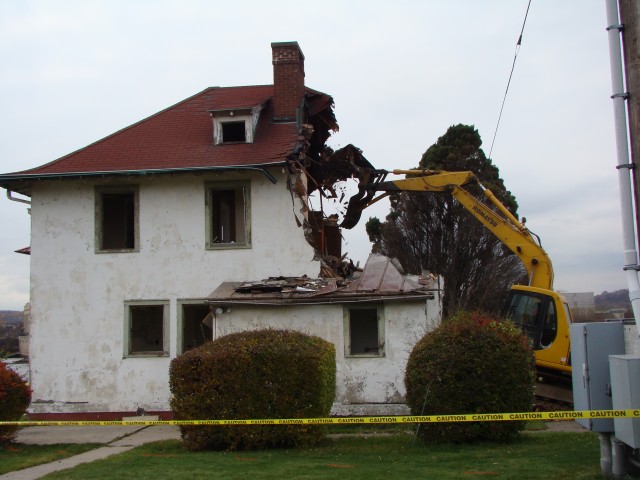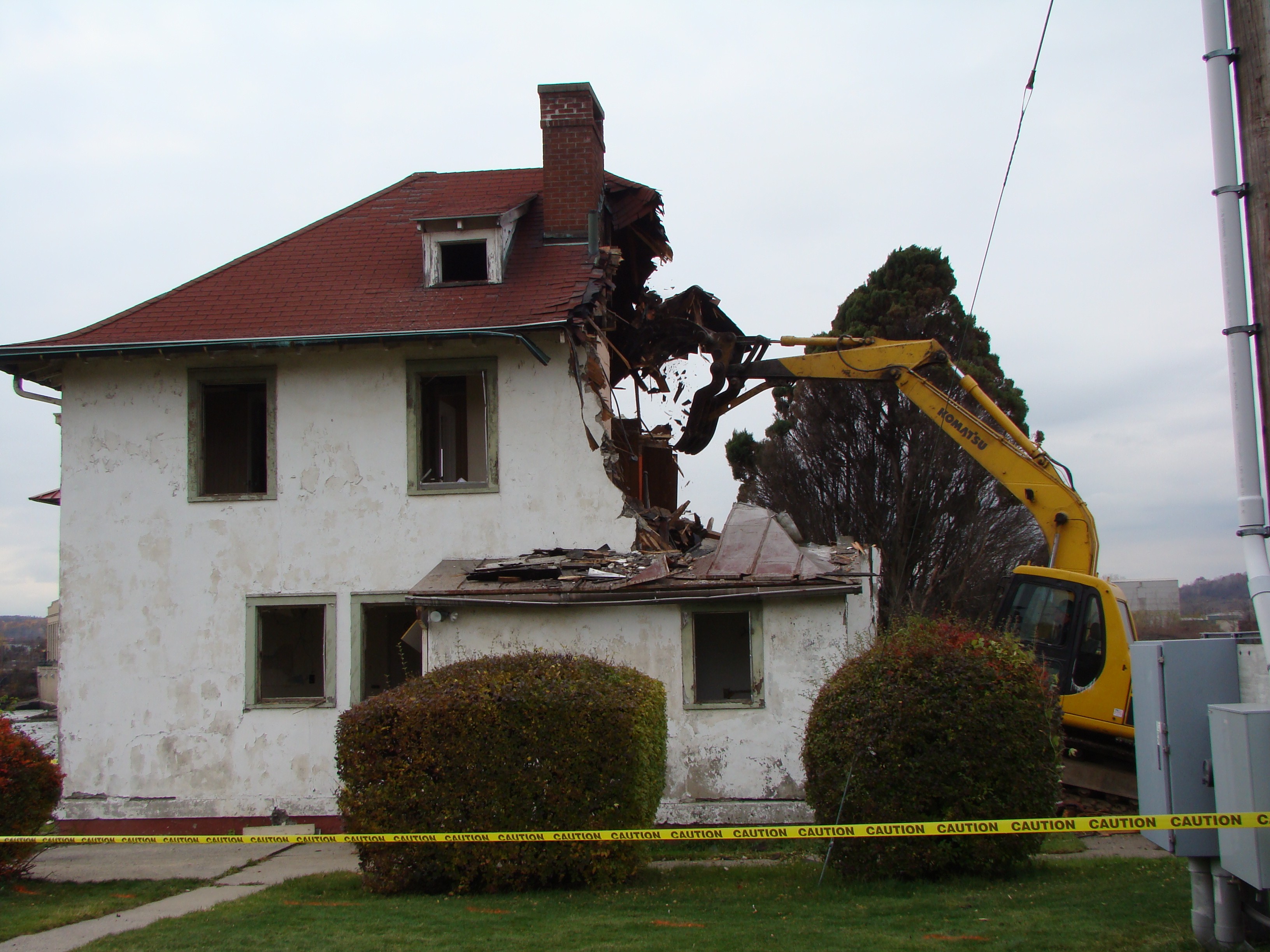
People passing through Troy Lock next navigation season might notice something missing from the area as they lock through.
Thanks to about $168,000 from the American Recovery and Reinvestment Act (ARRA), commonly referred to as the stimulus package, the crumbling lockmaster\'s house building that originally opened in 1916 was demolished, removing both an eyesore and a safety hazard from the area. The contract was combined with overall asbestos abatement work at both the lockmaster's house (required prior to demolition) as well as at other parts of U.S. Army Corps of Engineers, New York District's Albany Field Office facility, which creates another layer of safety benefits from the contract.
The job was completed by Tribal Construction, a nearby small business based out of northern New Jersey.
The lockmaster's house, which opened in 1916 with the Troy Lock and Dam, used to be occupied by the lock's actual lockmaster up until the 1970's, when the head of the facility was no longer required to live there.
Since then, the house has served as extra office space for various upstate District functions, ranging from regulatory to construction. As time marched on, the house fell into disrepair and was no longer suitable or safe enough to be occupied as office space and once stimulus funds became available earlier this year to remove the building, it was only a matter of time before it was ultimately torn down in October.
The demolition of the lockmaster house was just one of many stimulus projects being carried out by the District's Albany Field Office, which is co-located at the Troy Lock and Dam, about 150 miles up the Hudson River from New York City.
In fact, New York District's Albany Field Office has received approximately $1.4 million to manage various repairs and improvements at the nearly one century old facility and approximately $2.5 million to manage other projects elsewhere in upstate New York.
"The ARRA funding provided an opportunity to fund contract work that will lead to improved safety for our waterway users and our employees," said Bill Petronis, chief of the Albany Field Office. "Equipment upgrades will improve the efficiency and productivity of our workforce while reducing our energy consumption. Operations Division and the Albany Field Office were pleased we were able to quickly identify and award projects that not only helped to create jobs, but also promoted safety, energy conservation and supported small businesses."
Approximately $1 million went toward replacing a 40-ton hydraulic crane and a sectional barge system at the Lock.
"Replacing the crane and sectional barge system will increase public safety and the productivity and efficiency of our hired labor workforce performing various activities including removing debris and hazards to navigation from the lock entrances, performing channel maintenance activities, and performing maintenance and repair to the Troy Lock," Petronis said.
Additionally, the lighting at the lock and dam is undergoing a $232,000 improvement in order to both increase safety and security for vessels using the facility while at the same time decreasing energy consumption there.
Even further up the Hudson River, by Lake Champlain and the Canadian border, the Albany Field Office is also managing the $1.9 million dollar project for breakwater repairs at the Plattsburgh Harbor. The work will increase the safety of the harbor by repairing deteriorated and subsided portions of the breakwater to return the structure to its original design elevation and help protect the harbor from winddriven waves.
The field office is also using stimulus money to increase the capacity of an upland placement site for dredged material from the Hudson River, a $575,000 project. This work is will not only directly create jobs, but is crucial to maintaining the navigability of the Hudson River between New York City and Albany, Petronis said.
All of the ARRA projects being managed out the Albany field office are 100 percent set aside for small businesses, which in turn generally leads to more local contractors creating more local jobs.
While exact employment figures are not yet available, the nature of the work at Troy Lock as well as the work being managed by the Albany Field Office elsewhere upstate, requires employing many people from several backgrounds including construction, manufacturing, engineering and environmental science to name a few.
The Troy Lock serves government, commercial and recreational watercraft. During the 2009 navigation season, which ran from the beginning of May through the end of November, there were a total of 4,156 vessels, 2,777 lockages and 1,368 tons of commerce.

Social Sharing